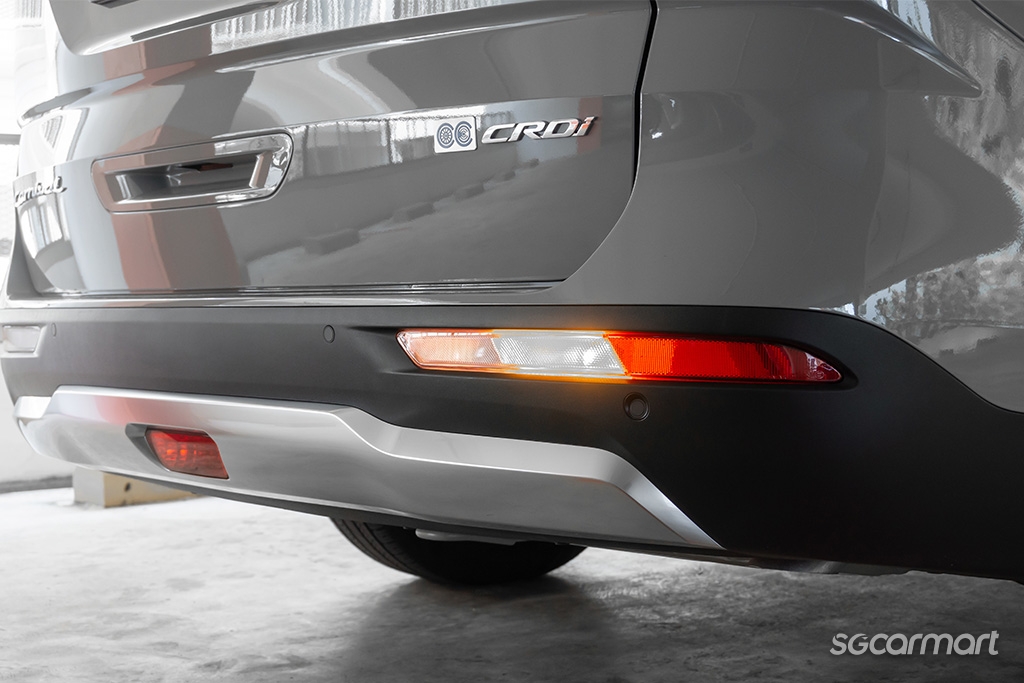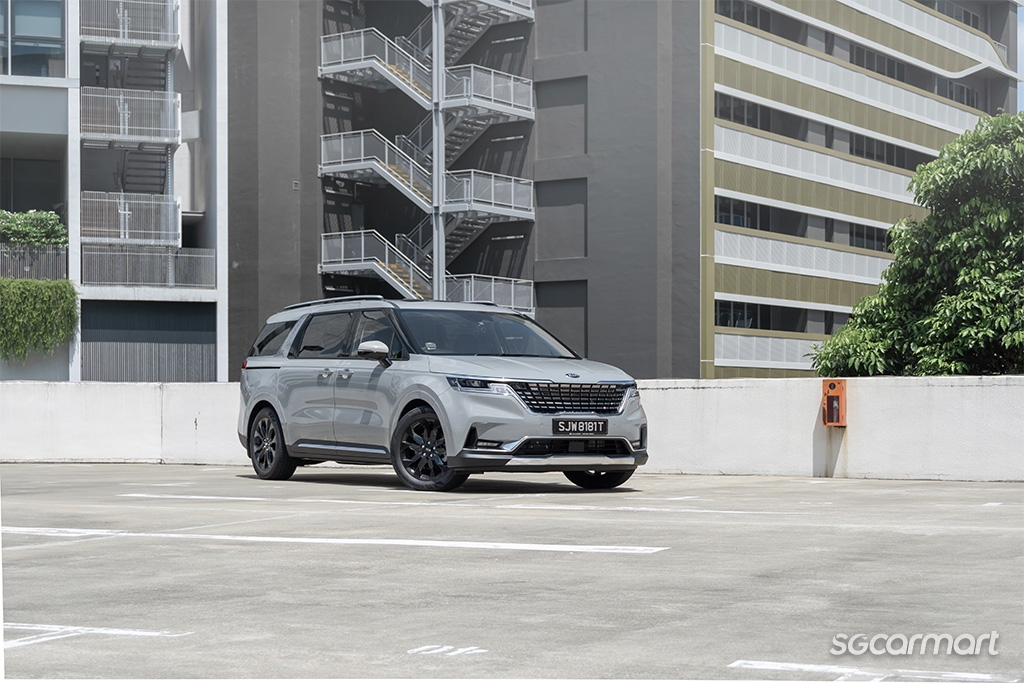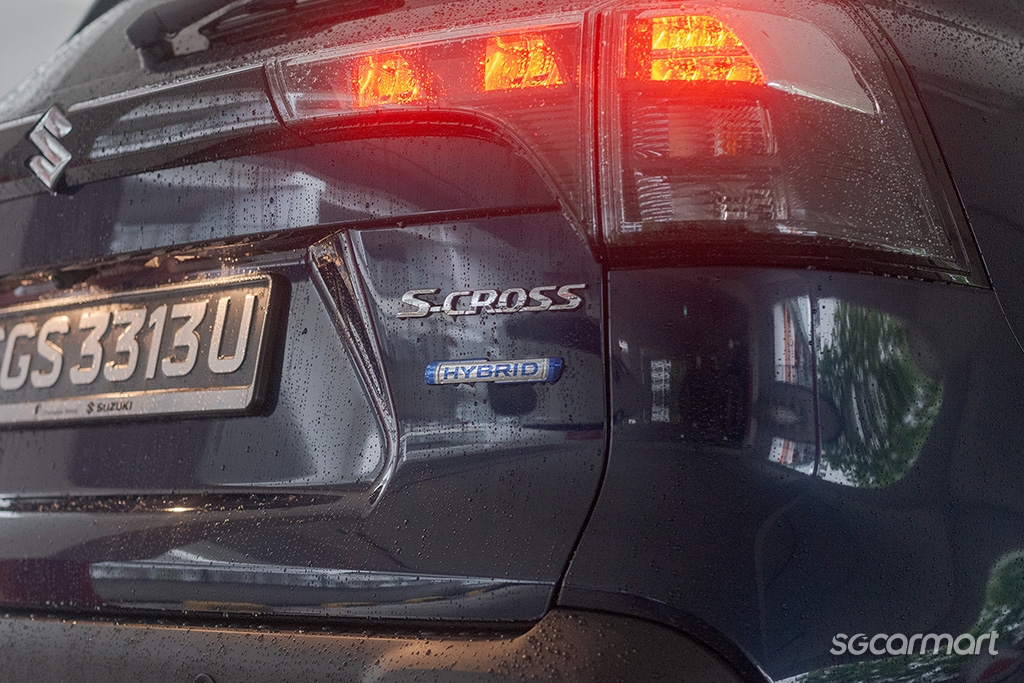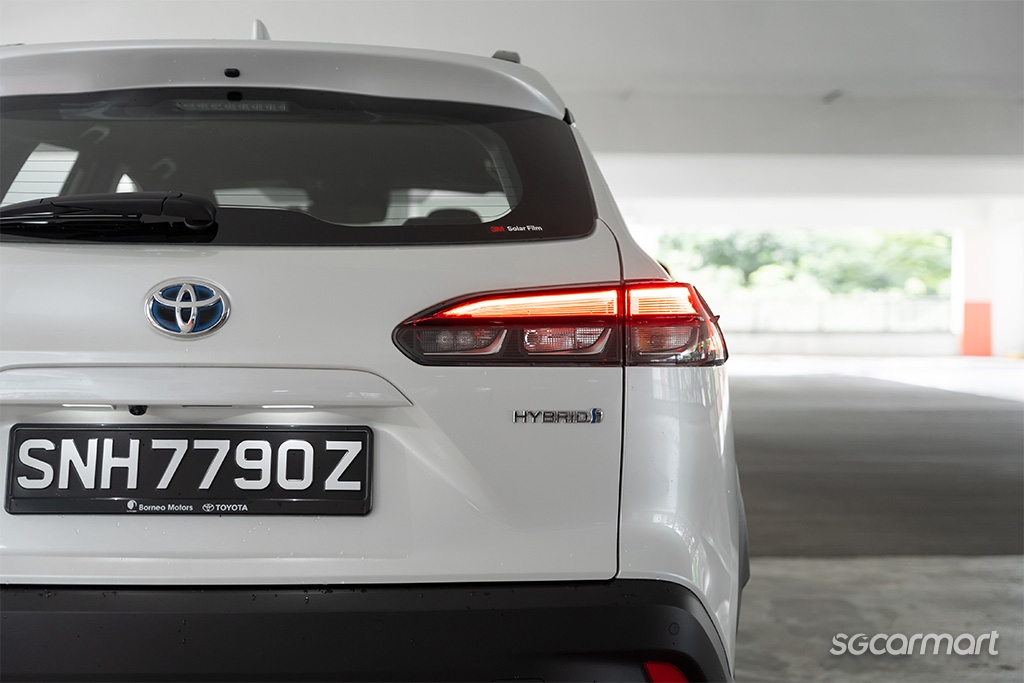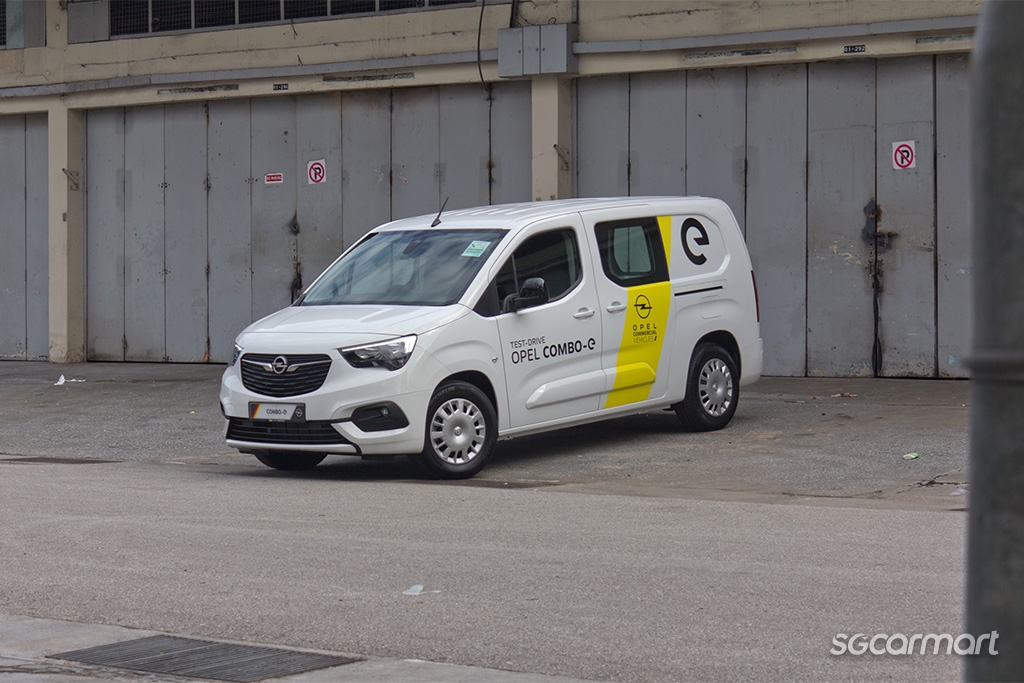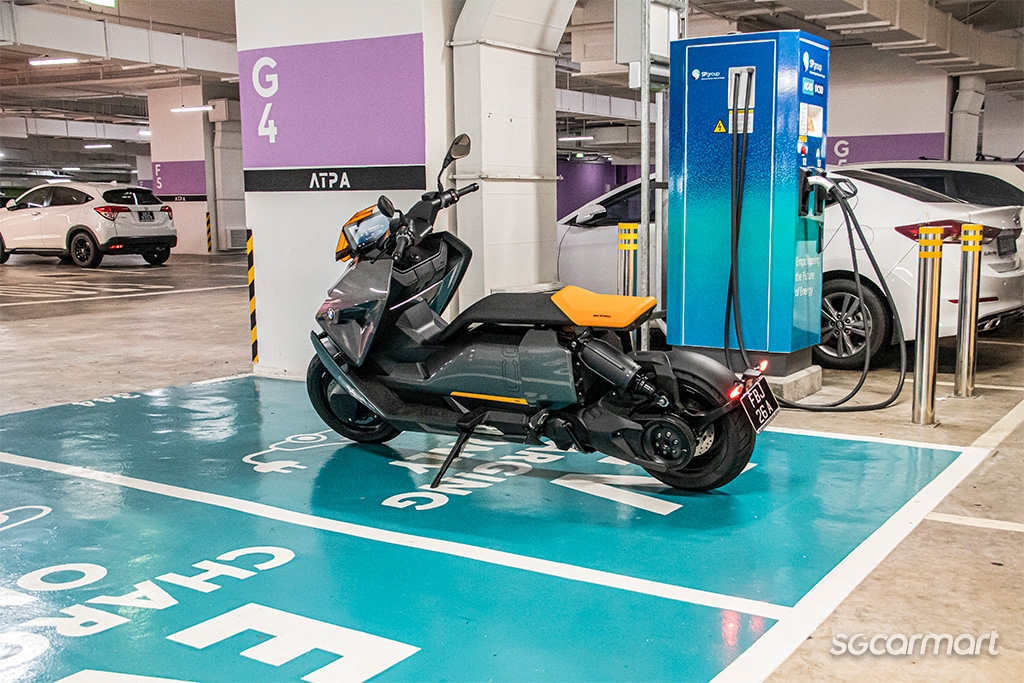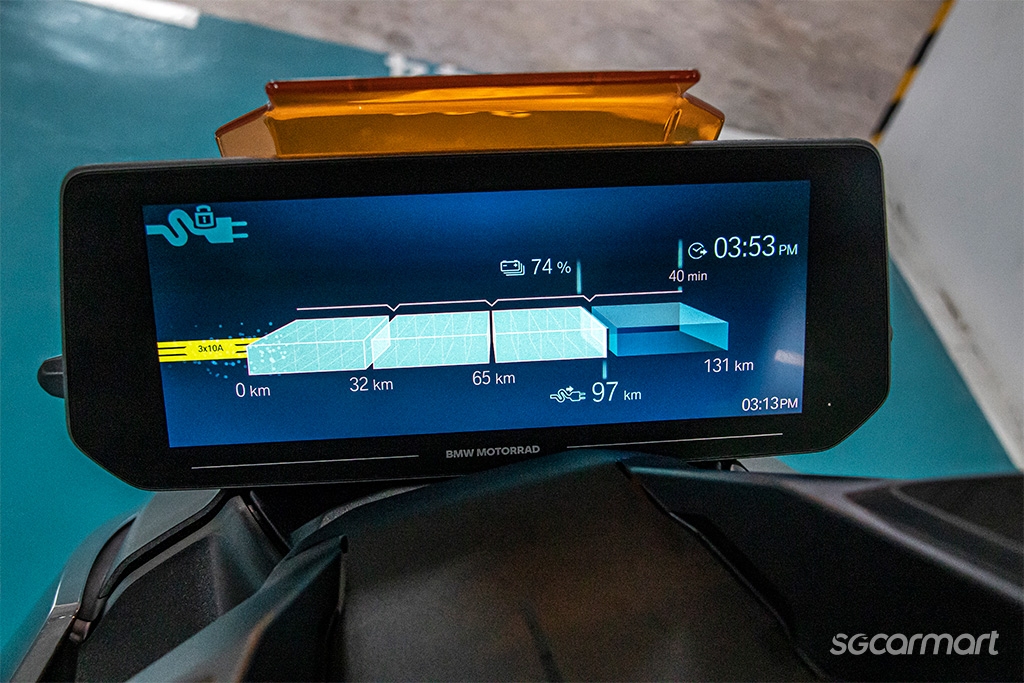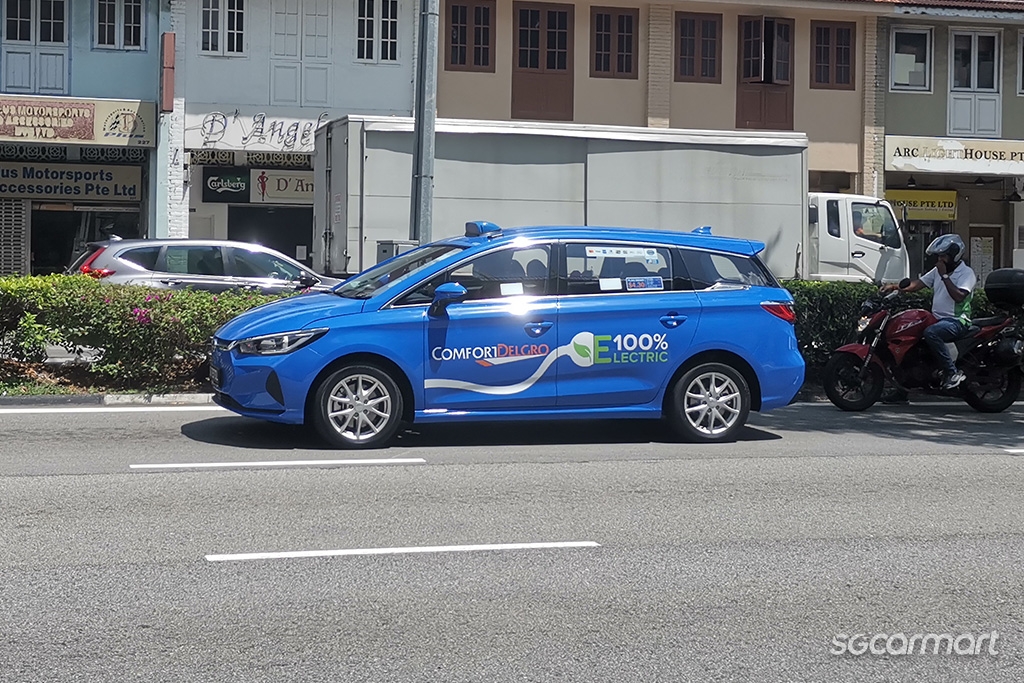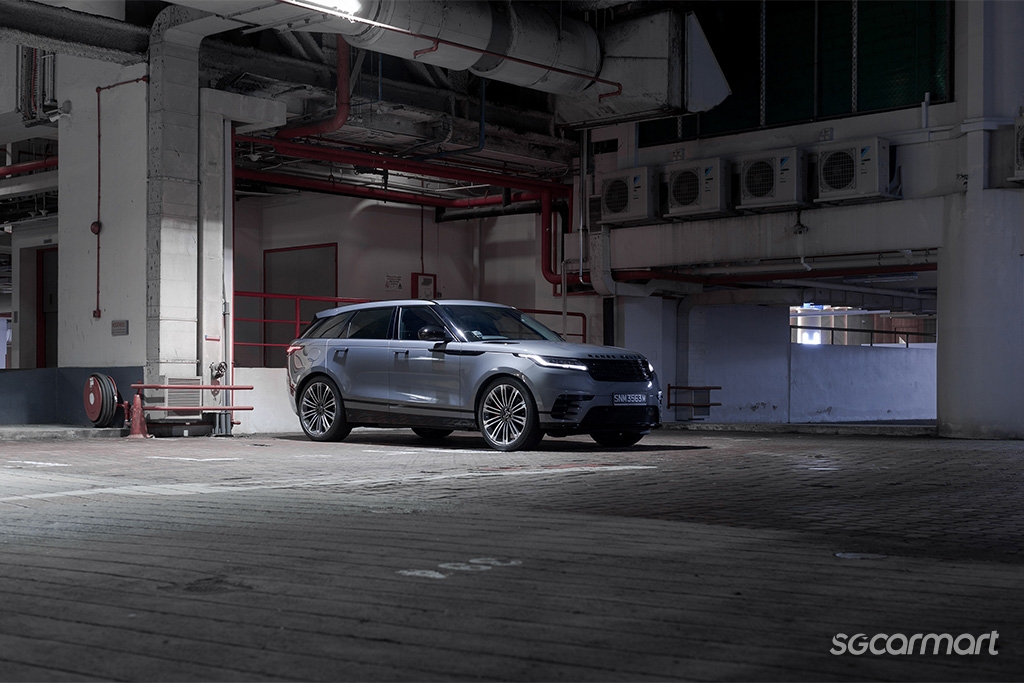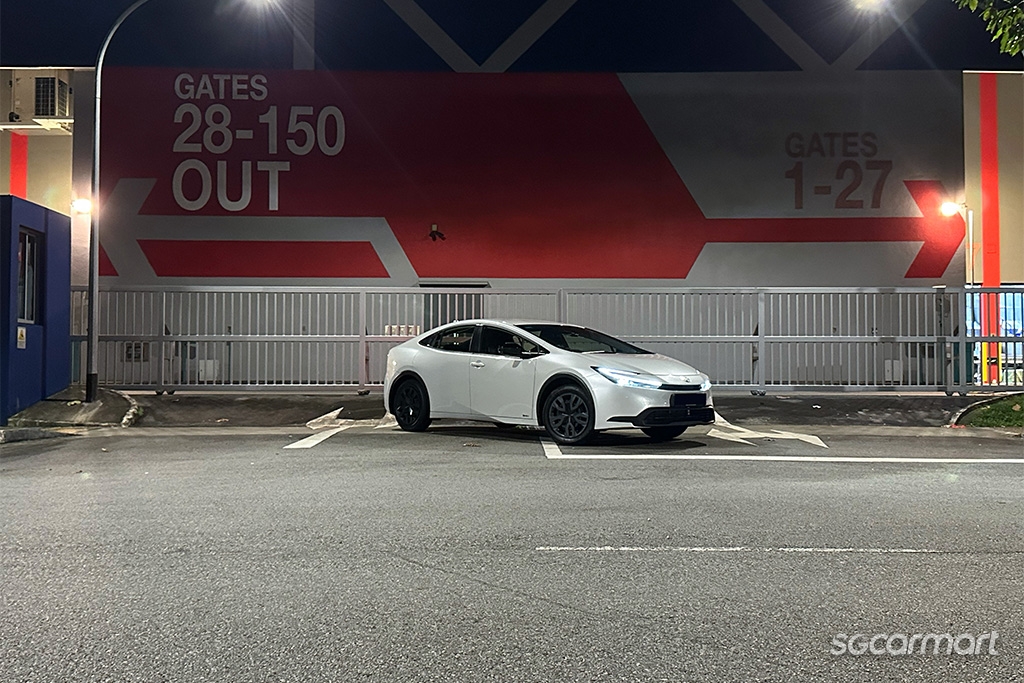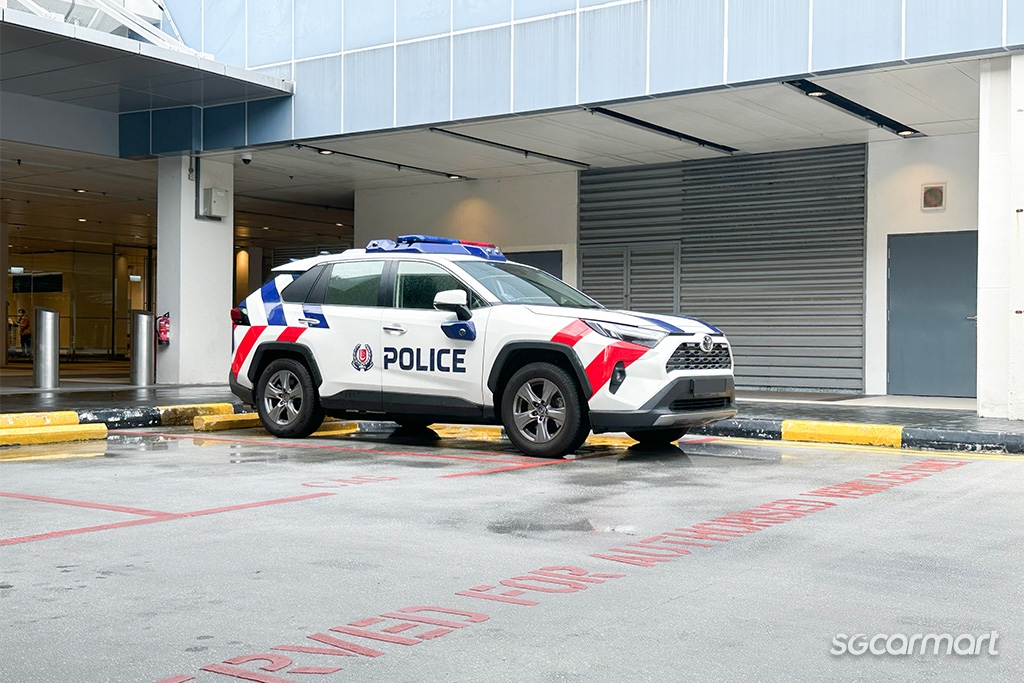9 key takeaways from LTA's 2023 stats, and what they tell us
14 Feb 2024|26,577 views
We've done a rather comprehensive analysis of LTA's 2023 new car registration statistics - an important indicator of where the market is at, and how the various car brands are faring in Singapore.
But beyond just brand-specific observations, the LTA's annual statistics also help to illuminate other less visible, but no less significant aspects of our roads. There are some important takeaways to be learned by poring over the various data tables - and by using a highlighter to identify what has happened with each passing year.
1. Diesel is starting to shrink - but ever so slightly
As we know, the Government is keen on phasing diesel vehicles out. And the deadline, if you remember, is for 100% of vehicles to run on cleaner energy by 2040.
However, that's going to take some time.
The LTA classifies motor vehicles into five main categories: Cars, Taxis, Motorcycles, Goods & Other Vehicles, and Buses. While the total population of diesel-powered vehicles in 2023 is lower than in 2022, it's worth highlighting that the sub-category of passenger cars appears to have peaked much later than the rest of the categories - in 2022.
Contrarily, the population of diesel-powered vehicles goods vehicles appears to have peaked in 2018, while diesel-powered buses peaked a year later, in 2019.
Barring sudden extreme measures that incentivise the immediate replacement of diesel-powered vehicles, what this means is that diesel vehicles, as a whole, are going to be on our roads for a fair bit longer than we imagine.
2. Mild-electrification…
Much is often made about the proliferation of electric cars on our roads. Their numbers eclipsed the five-figure mark for the first time in 2023 - hitting 11,941 units - and made up 18% of new cars registered in 2023.
Having said that, the discourse around them is hyped up so much that that we may sometimes overlook the fact that even more growth has been made on the petrol-electric front.
In 2022, there were 558,729 petrol-powered cars on our roads, against 65,882 petrol-electric cars. Last year, the scales tipped more in the favour of the latter, as the population grew to 79,256. In tandem, the number of purely petrol-powered cars slid to 540,605.
You could be forgiven if you thought that appreciation for full hybrid models - such as those dominating Toyota, Nissan, and Honda's lineups - has suddenly jumped in recent times. However, we'd also hasten to point out that the LTA classifies 48V mild-hybrid models as petrol-electric cars - not just full hybrids. (We've gone into the differences between both at length here, if you're still unsure what the difference is.) As such, the picture on how consumers feel towards full hybrids remains somewhat hazy.
What we can be certain of, on the other hand, is the indication by the numbers that product offerings are changing.
Quickly run through the models on sale by the bestselling car brands here today - including the likes of Mercedes-Benz, BMW, Audi, Volkswagen and Mazda - and you'll notice that a growing proportion comprises mild hybrids.
In other words, by the simple virtue of shopping in the new car market today, a buyer could already be helping to bolster the number of electrified cars.
3. …but not for commercial vehicles
It should come as no surprise that Goods & Other Vehicles is seeing a shift away from diesel power. Nonetheless, it's where the numbers are shifting that may come as a surprise.
While the passenger car market is now shifting heavily towards petrol-electric power, the Goods & Other Vehicles category is shifting solely to either side: Petrol or electric. Desperately few are petrol-electric - just four vehicles as of last year, in fact. (A meagre increase of two units year-on-year.)
Quite immediately, the numbers seem to denote a lack of hybrid (or even mild hybrid) options with the commercial vehicle sector. And indeed, try hunting for petrol-electric CVs and you'll find they number close to none on our shores.
More crucially, however, the numbers spotlight the pressing need to move CVs into the fully electric arena. Diesel engines will logically be excluded from the 2040 mandate mentioned above. Consequently, without the in-between solution of mild hybrid or hybrid models to fall back on, CVs will have to go fully electric. Thankfully, that shouldn't be too much of an issue for business operators.
Interestingly, lights goods vans, in particular, appear to have warmly embraced full electrification. At the time of writing, we counted more than 15 different electric van models that can be bought through both parallel importers and authorised dealers today.
Although electric motorcycles are still vastly outnumbered by their petrol-powered counterparts, their numbers appear to be growing (BMW CE 04 pictured)
4. An electric motorcycle boom
Contrarily, we'd argue that electric motorcycles still occupy a niche on our roads today. Still, there's no denying that their numbers are growing.
Remaining firmly in single-digit territory all the way up till 2021, the population of electric motorcycles first spiked to three-digits - 115 units - in 2022. Last year, the numbers more than doubled again to a new record of 270.
We should caveat that the barriers to widespread adoption remain higher for electric motorcycles than for electric cars, or indeed CVs.
Even without factoring in infrastructural issues, or driving (riding) range, one glaring problem stands out: Electric bikes are significantly more expensive than their petrol-powered counterparts. This may be a sticking issue, considering that demand for bikes tends to be more price-elastic.
Nonetheless, support for electric bikes is growing.
SingPost was one of the first companies to announce the use of two electric three-wheelers in 2021, as part of a trial to electrify its delivery fleet. Another trial, involving 20 electric motorcycles manufactured by Taiwanese firm Gogoro, was co-piloted by FoodPanda and Cycle & Carriage. Both trials were focused on exploring the possibilities of scaling up battery-swopping - which should help circumvent waiting times for recharging, especially in the delivery sector.
If you're still not convinced yet that electric bikes will soon be part of the future, even driving schools are throwing their weight behind them.
Alongside electric cars, ComfortDelgro Driving Centre has also brought in a few electric bikes for its learners, and even offers an Electric Motorcycle Familiarisation Course for both 2B and 2A riders currently. We're not sure when exactly the switchover to e-bikes will happen, but when it does, Singapore should be ready.
5. Taxis continue their downward trend
Premier and Strides (previously SMRT) have merged, Yellow Tops have all but disappeared, and TransCab's future may be up in the air, given its (contentious) acquisition by Grab.
It should come as no surprise that the population of taxis on our ride is dwindling (and no, we're not talking about private-hire vehicles - at least not yet).
A peak of 28,736 vehicles was recorded in 2014, and after stabilising for a couple of years, the downwards slide has been consistently apparent. Notably, the number of taxis dipped below 20,000 after 2018, and then below 15,000 after 2020. Last year, there were only 13,620 taxis on our roads.
The fact that the decline has been gradual and sustained (rather than abrupt) speaks to how this trend is likely to continue in the years to come. Furthermore, the reason why this is occurring should be no secret: Owing to one major (and relatively recent) industry-disruptor.
6. Private hire car numbers are up. Unsurprisingly.
Whether Singaporeans like it or not, ride-hailing is here to stay.
Or to be more accurate, ride-hailing is here to stay because Singaporeans seem to like it.
According to the LTA's stats, private-hire cars appear to be the ones driving growth still in the car population. The fact that the figures continued to grow from 2022 to 2023 - reaching a new record of 651,302 units - despite COE-induced headwinds may catch one by surprise at first.
Look closer, however, and you'll notice that the number of private cars actually shrank 1.5% to 524,613. So, too, did tuition cars (used in driving schools) and off-peak cars.
Where, then, have the larger numbers stemmed from?
Company cars grew slightly a slight 0.009% to hit 35,429 units in 2023 - but it was ultimately the 12.5% year-on-year increase in private-hire cars that helped to drive the growth. With their total population (including self-driven and chauffeured cars) standing at 81,754 last years, private-hire cars now outnumber taxis by a wide margin of six-to-one.
7. Cat B's population also continues to grow
As if it wasn't already clear enough that car ownership in Singapore is reserved more for the better-heeled, the numbers are showing it too.
Since 2015, the population of Cat B classified cars has grown every year without fail, reaching an all-time high of 331,007 last year. On the other hand, the population of Cat A classified cars has shrunk over the past decade - from more than 341,000 in 2013, to slightly under 320,000 last year.
One might immediately attribute to these trends to the insanity of COE prices in recent times, and while this should not be written off entirely, it's worth considering other factors of influence too.
For instance, a new power ceiling for Cat A, introduced in 2013, saw a sizeable chunk of models moving into Cat B. (Although the immediate rejoinder is that brands have responded resoundingly with strategically re-tuned models since.)
By a different token, a good number of the hybrid models favoured by private-hire vehicle fleet operators happen to have engines of larger displacements too. If car prices remain at exorbitant levels, we wouldn't be surprised to see this trend hold into 2024.
8. Vehicles exempted from VQS at highest level yet
To be more specific, there were 35,408 vehicles exempted from the Vehicle Quota System (VQS) in Singapore last year: 734 more than the previous year, and a whopping 9,021 more than in 2013.
The LTA defines such vehicles as those including scheduled and school buses, emergency vehicles, vehicles for engineering plants primarily for off-the-road use, diplomatic vehicles, and finally, vehicles under the Disabled Persons Scheme (DPS).
Before anyone is quick to hurl blame for the recent rise in COE premiums, an exemption from the VQS means that these vehicles do not impact the COE system at all.
However, their presence does impact overall road-use in Singapore - which brings us to our final point…
9. Total population of vehicles also greater than it's ever been
Let it sink in: There are nearly one million vehicles on Singapore's roads (both public and non-public today).
While the passenger-vehicle population was hit with a growth freeze in 2017 - a hard-line policy unlikely to change for the foreseeable future - that hasn't meant that the rest of the vehicle population is still not growing.
With a 0.25% annual growth rate still allowed for goods vehicles and buses, and with vehicles exempted from the Vehicle Quota System (VQS) facing no hard restraints, the total population of vehicles has continued to grow. Since 2021, the numbers have consistently ballooned with each successive year. And as of 2023, the figure stood at a whopping 996,732 vehicles.
If the roads feel more congested than before… well, that's because they actually are.
Here are a few other articles that may interest you!
2023 round-up: Toyota, Merc lead again; BYD makes huge waves
We've done a rather comprehensive analysis of LTA's 2023 new car registration statistics - an important indicator of where the market is at, and how the various car brands are faring in Singapore.
But beyond just brand-specific observations, the LTA's annual statistics also help to illuminate other less visible, but no less significant aspects of our roads. There are some important takeaways to be learned by poring over the various data tables - and by using a highlighter to identify what has happened with each passing year.
1. Diesel is starting to shrink - but ever so slightly
As we know, the Government is keen on phasing diesel vehicles out. And the deadline, if you remember, is for 100% of vehicles to run on cleaner energy by 2040.
However, that's going to take some time.
The LTA classifies motor vehicles into five main categories: Cars, Taxis, Motorcycles, Goods & Other Vehicles, and Buses. While the total population of diesel-powered vehicles in 2023 is lower than in 2022, it's worth highlighting that the sub-category of passenger cars appears to have peaked much later than the rest of the categories - in 2022.
Contrarily, the population of diesel-powered vehicles goods vehicles appears to have peaked in 2018, while diesel-powered buses peaked a year later, in 2019.
Barring sudden extreme measures that incentivise the immediate replacement of diesel-powered vehicles, what this means is that diesel vehicles, as a whole, are going to be on our roads for a fair bit longer than we imagine.
2. Mild-electrification…
Much is often made about the proliferation of electric cars on our roads. Their numbers eclipsed the five-figure mark for the first time in 2023 - hitting 11,941 units - and made up 18% of new cars registered in 2023.
Having said that, the discourse around them is hyped up so much that that we may sometimes overlook the fact that even more growth has been made on the petrol-electric front.
In 2022, there were 558,729 petrol-powered cars on our roads, against 65,882 petrol-electric cars. Last year, the scales tipped more in the favour of the latter, as the population grew to 79,256. In tandem, the number of purely petrol-powered cars slid to 540,605.
You could be forgiven if you thought that appreciation for full hybrid models - such as those dominating Toyota, Nissan, and Honda's lineups - has suddenly jumped in recent times. However, we'd also hasten to point out that the LTA classifies 48V mild-hybrid models as petrol-electric cars - not just full hybrids. (We've gone into the differences between both at length here, if you're still unsure what the difference is.) As such, the picture on how consumers feel towards full hybrids remains somewhat hazy.
What we can be certain of, on the other hand, is the indication by the numbers that product offerings are changing.
Quickly run through the models on sale by the bestselling car brands here today - including the likes of Mercedes-Benz, BMW, Audi, Volkswagen and Mazda - and you'll notice that a growing proportion comprises mild hybrids.
In other words, by the simple virtue of shopping in the new car market today, a buyer could already be helping to bolster the number of electrified cars.
3. …but not for commercial vehicles
It should come as no surprise that Goods & Other Vehicles is seeing a shift away from diesel power. Nonetheless, it's where the numbers are shifting that may come as a surprise.
While the passenger car market is now shifting heavily towards petrol-electric power, the Goods & Other Vehicles category is shifting solely to either side: Petrol or electric. Desperately few are petrol-electric - just four vehicles as of last year, in fact. (A meagre increase of two units year-on-year.)
Quite immediately, the numbers seem to denote a lack of hybrid (or even mild hybrid) options with the commercial vehicle sector. And indeed, try hunting for petrol-electric CVs and you'll find they number close to none on our shores.
More crucially, however, the numbers spotlight the pressing need to move CVs into the fully electric arena. Diesel engines will logically be excluded from the 2040 mandate mentioned above. Consequently, without the in-between solution of mild hybrid or hybrid models to fall back on, CVs will have to go fully electric. Thankfully, that shouldn't be too much of an issue for business operators.
Interestingly, lights goods vans, in particular, appear to have warmly embraced full electrification. At the time of writing, we counted more than 15 different electric van models that can be bought through both parallel importers and authorised dealers today.
Although electric motorcycles are still vastly outnumbered by their petrol-powered counterparts, their numbers appear to be growing (BMW CE 04 pictured)
4. An electric motorcycle boom
Contrarily, we'd argue that electric motorcycles still occupy a niche on our roads today. Still, there's no denying that their numbers are growing.
Remaining firmly in single-digit territory all the way up till 2021, the population of electric motorcycles first spiked to three-digits - 115 units - in 2022. Last year, the numbers more than doubled again to a new record of 270.
We should caveat that the barriers to widespread adoption remain higher for electric motorcycles than for electric cars, or indeed CVs.
Even without factoring in infrastructural issues, or driving (riding) range, one glaring problem stands out: Electric bikes are significantly more expensive than their petrol-powered counterparts. This may be a sticking issue, considering that demand for bikes tends to be more price-elastic.
Nonetheless, support for electric bikes is growing.
SingPost was one of the first companies to announce the use of two electric three-wheelers in 2021, as part of a trial to electrify its delivery fleet. Another trial, involving 20 electric motorcycles manufactured by Taiwanese firm Gogoro, was co-piloted by FoodPanda and Cycle & Carriage. Both trials were focused on exploring the possibilities of scaling up battery-swopping - which should help circumvent waiting times for recharging, especially in the delivery sector.
If you're still not convinced yet that electric bikes will soon be part of the future, even driving schools are throwing their weight behind them.
Alongside electric cars, ComfortDelgro Driving Centre has also brought in a few electric bikes for its learners, and even offers an Electric Motorcycle Familiarisation Course for both 2B and 2A riders currently. We're not sure when exactly the switchover to e-bikes will happen, but when it does, Singapore should be ready.
5. Taxis continue their downward trend
Premier and Strides (previously SMRT) have merged, Yellow Tops have all but disappeared, and TransCab's future may be up in the air, given its (contentious) acquisition by Grab.
It should come as no surprise that the population of taxis on our ride is dwindling (and no, we're not talking about private-hire vehicles - at least not yet).
A peak of 28,736 vehicles was recorded in 2014, and after stabilising for a couple of years, the downwards slide has been consistently apparent. Notably, the number of taxis dipped below 20,000 after 2018, and then below 15,000 after 2020. Last year, there were only 13,620 taxis on our roads.
The fact that the decline has been gradual and sustained (rather than abrupt) speaks to how this trend is likely to continue in the years to come. Furthermore, the reason why this is occurring should be no secret: Owing to one major (and relatively recent) industry-disruptor.
6. Private hire car numbers are up. Unsurprisingly.
Whether Singaporeans like it or not, ride-hailing is here to stay.
Or to be more accurate, ride-hailing is here to stay because Singaporeans seem to like it.
According to the LTA's stats, private-hire cars appear to be the ones driving growth still in the car population. The fact that the figures continued to grow from 2022 to 2023 - reaching a new record of 651,302 units - despite COE-induced headwinds may catch one by surprise at first.
Look closer, however, and you'll notice that the number of private cars actually shrank 1.5% to 524,613. So, too, did tuition cars (used in driving schools) and off-peak cars.
Where, then, have the larger numbers stemmed from?
Company cars grew slightly a slight 0.009% to hit 35,429 units in 2023 - but it was ultimately the 12.5% year-on-year increase in private-hire cars that helped to drive the growth. With their total population (including self-driven and chauffeured cars) standing at 81,754 last years, private-hire cars now outnumber taxis by a wide margin of six-to-one.
7. Cat B's population also continues to grow
As if it wasn't already clear enough that car ownership in Singapore is reserved more for the better-heeled, the numbers are showing it too.
Since 2015, the population of Cat B classified cars has grown every year without fail, reaching an all-time high of 331,007 last year. On the other hand, the population of Cat A classified cars has shrunk over the past decade - from more than 341,000 in 2013, to slightly under 320,000 last year.
One might immediately attribute to these trends to the insanity of COE prices in recent times, and while this should not be written off entirely, it's worth considering other factors of influence too.
For instance, a new power ceiling for Cat A, introduced in 2013, saw a sizeable chunk of models moving into Cat B. (Although the immediate rejoinder is that brands have responded resoundingly with strategically re-tuned models since.)
By a different token, a good number of the hybrid models favoured by private-hire vehicle fleet operators happen to have engines of larger displacements too. If car prices remain at exorbitant levels, we wouldn't be surprised to see this trend hold into 2024.
8. Vehicles exempted from VQS at highest level yet
To be more specific, there were 35,408 vehicles exempted from the Vehicle Quota System (VQS) in Singapore last year: 734 more than the previous year, and a whopping 9,021 more than in 2013.
The LTA defines such vehicles as those including scheduled and school buses, emergency vehicles, vehicles for engineering plants primarily for off-the-road use, diplomatic vehicles, and finally, vehicles under the Disabled Persons Scheme (DPS).
Before anyone is quick to hurl blame for the recent rise in COE premiums, an exemption from the VQS means that these vehicles do not impact the COE system at all.
However, their presence does impact overall road-use in Singapore - which brings us to our final point…
9. Total population of vehicles also greater than it's ever been
Let it sink in: There are nearly one million vehicles on Singapore's roads (both public and non-public today).
While the passenger-vehicle population was hit with a growth freeze in 2017 - a hard-line policy unlikely to change for the foreseeable future - that hasn't meant that the rest of the vehicle population is still not growing.
With a 0.25% annual growth rate still allowed for goods vehicles and buses, and with vehicles exempted from the Vehicle Quota System (VQS) facing no hard restraints, the total population of vehicles has continued to grow. Since 2021, the numbers have consistently ballooned with each successive year. And as of 2023, the figure stood at a whopping 996,732 vehicles.
If the roads feel more congested than before… well, that's because they actually are.
Here are a few other articles that may interest you!
2023 round-up: Toyota, Merc lead again; BYD makes huge waves
Thank You For Your Subscription.
















